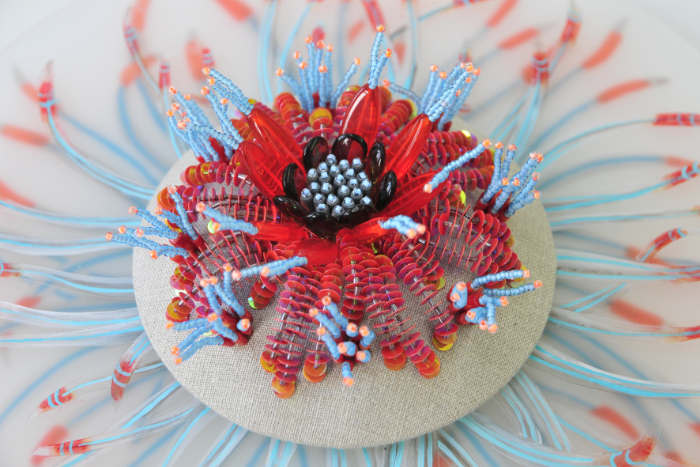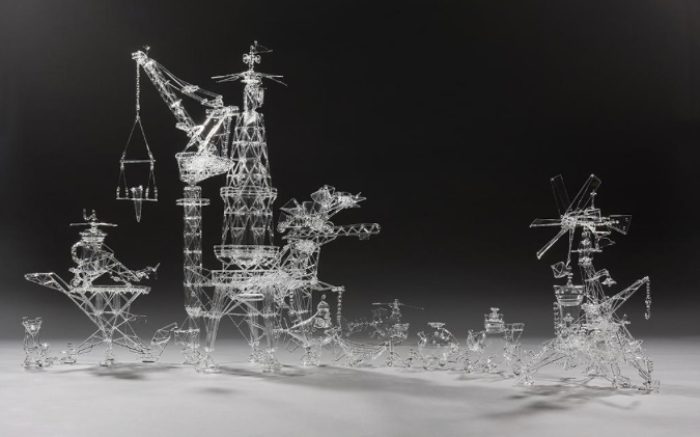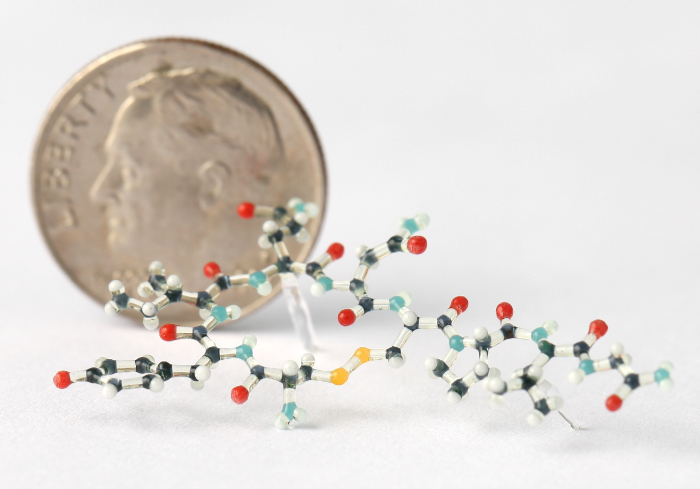
Like a moth to a flame
US glass artist Dan Hoffman specialises in flameworking tiny borosilicate glass molecules and complex geometric structures, some of which are smaller than a human fingernail. His passion ignited when he started using glass as a medium to help him grasp the complex topics he was learning his Bachelor of Science (BS) chemistry classes and today he combines these two passions in his artwork. Linda Banks finds out more.
You have a scientific background and have brought this into your intricate, flameworked glass pieces. What led you to start working with glass?
I started working with glass shortly after starting to study chemistry at the University of California, Santa Cruz, US. Growing up in Southern California, I was exposed to a lot of highly functional, scientific-style waterpipes, and I was curious about the processes of how such intricate apparatus were made.
When I moved to Santa Cruz, I asked around town for local glassblowing classes and was introduced to Nathan Bennett (Instagram: @santacruzglasspics) and his beginner flameworking classes. At the time, he was teaching through the Santa Cruz adult education programme and would bring in 10 small torches to the local high school jewellery-making room each week. I rapidly fell in love with everything about working with glass, taking Nathan’s class several times in a row, apprenticing under him and eventually buying my own equipment and renting space in his studio.
My passion for glass and chemistry developed hand in hand, and my body of work naturally began to have a scientific focus. After getting my BS in Chemistry, I realised that glass was my true passion. I attended Salem Community College to take the Scientific Glass Technology and Glass Art programmes.
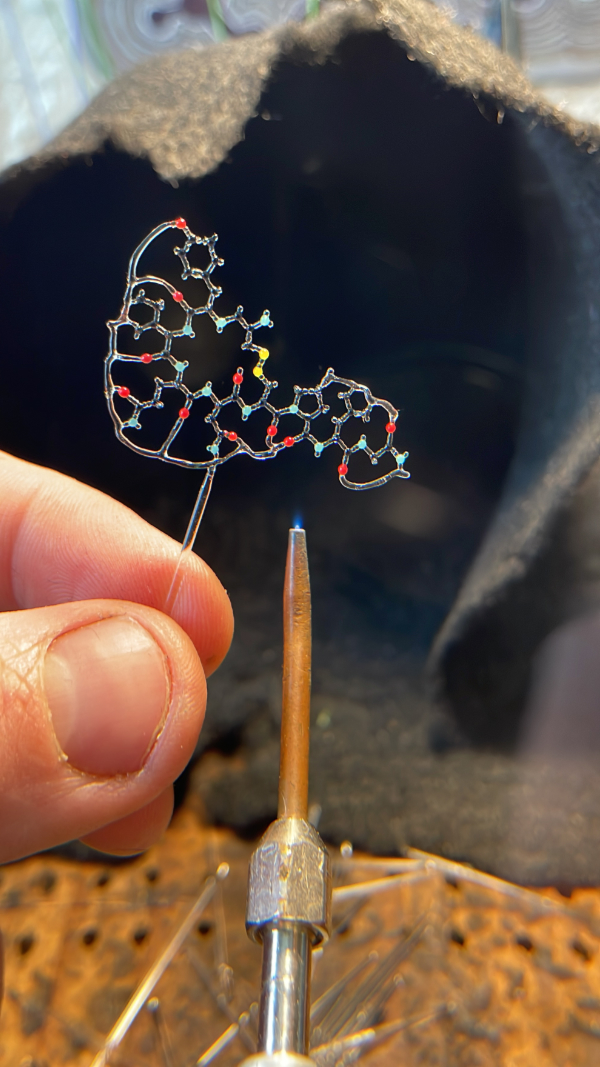
What glass techniques have you used, and which do you prefer?
While attending Salem Community College, I was introduced to a wide variety of techniques, including hot shop, coldworking, kiln fusing and more. However, my first true love of flameworking with borosilicate glass has remained my preferred method of working with glass.
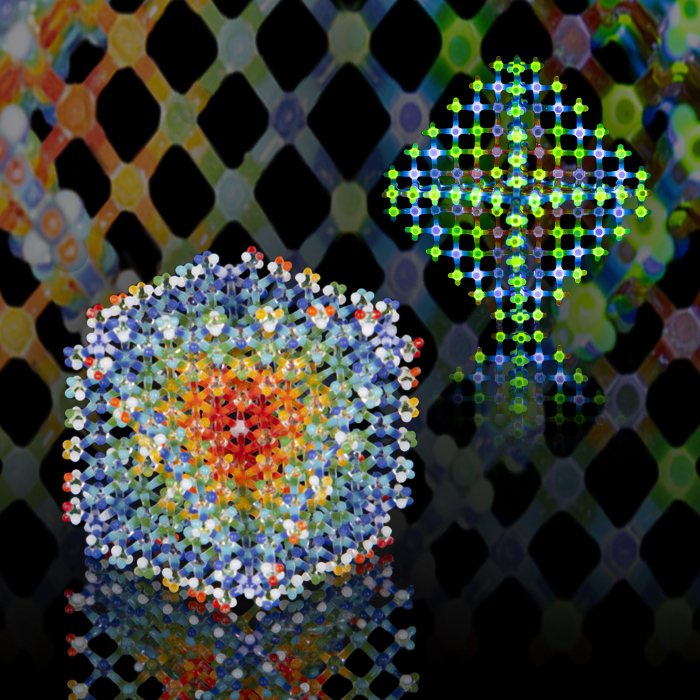
What is your creative approach? Do you draw your ideas out or dive straight in with the materials?
Most of my work is meticulously planned in advance – and sometimes even drawn out to scale before I even touch a piece of glass. All of the geometric structures and molecules require a lot of prep work and, without making blueprints before starting, a lot of this style of work would be nearly impossible. On my more intricate, functional pieces, I frequently use detailed sketches to create the main vessel for a piece, but allow myself to flow and to listen to the piece to make decisions about how to decorate it with colours, patterns and external attachments. Rarely do I jump truly blindly into making a piece.
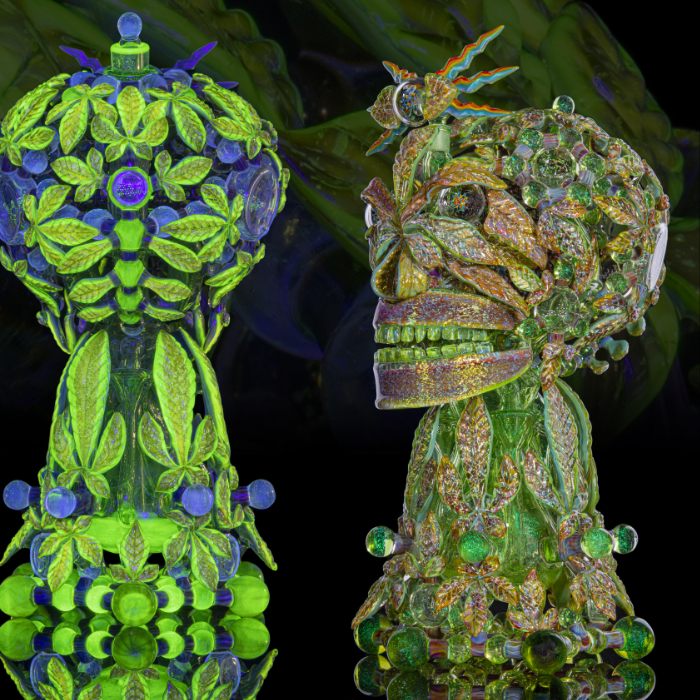
What message(s) do you want to convey through your art?
I hope to convey an appreciation of, and a curiosity for, science through my art. I have found that chemistry is a rather polarising field: many people had a less-than-ideal experience with it in school and now look down upon or dismiss the topic as ‘too hard’. With my work, I try to show that many of the concepts of chemistry can be beautiful and intuitive, rather than intimidating. I also aim to provide education and awareness around psychedelic and psychoactive compounds, and dispel some of the misconceptions that these powerful molecules have in the public eye.

What is your favourite tool or piece of equipment and why?
My favourite tool is my extra micro octagonal reamer. It was made by Firebug Jay, an American toolmaker, and is a typical graphite octagonal reamer mounted on a wooden handle – except that the whole thing is barely a few centimetres long! The handle is about 2mm in diameter and was made to be a novelty item, but I use it a lot for flaring open tiny tubes. I also have a tiny, but not quite so small, paddle that Firebug Jay made for me that I use almost every day.
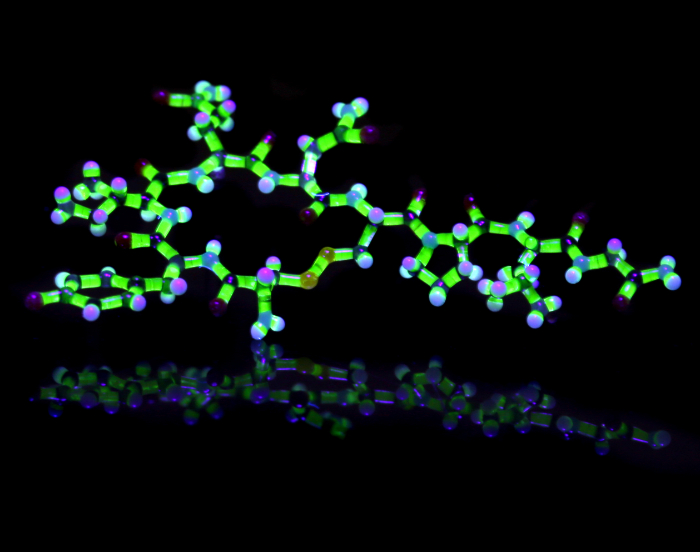
Do you have a favourite piece you have made? Why is it your favourite?
My favourite piece, among many, would have to be a DNA molecule plasma lamp I made in 2017. It was a collaboration with plasma artist Bruce Suba. I created an accurate strand of DNA – the most complex micro molecule I’ve ever created – and sealed it inside a 30mm diameter tube. The structure took days of planning and several weeks to prepare all the tiny atoms, and I was very pleasantly surprised with how it came together. Suba then helped me fill the tube with a cocktail of noble gases, and we built an inductively coupled transformer base, so the tube glows an ethereal blue with a cloud of gas clinging to the structure. As it had a few very small technical flaws, I ended up keeping the piece and it has lived on my bedside table ever since.
Where do you show and sell your work?
I mostly share and sell work directly through my Instagram page and website. I also frequently set up displays and vend at music festivals and psychedelic events around the US. I work with a variety of stores and galleries as well.
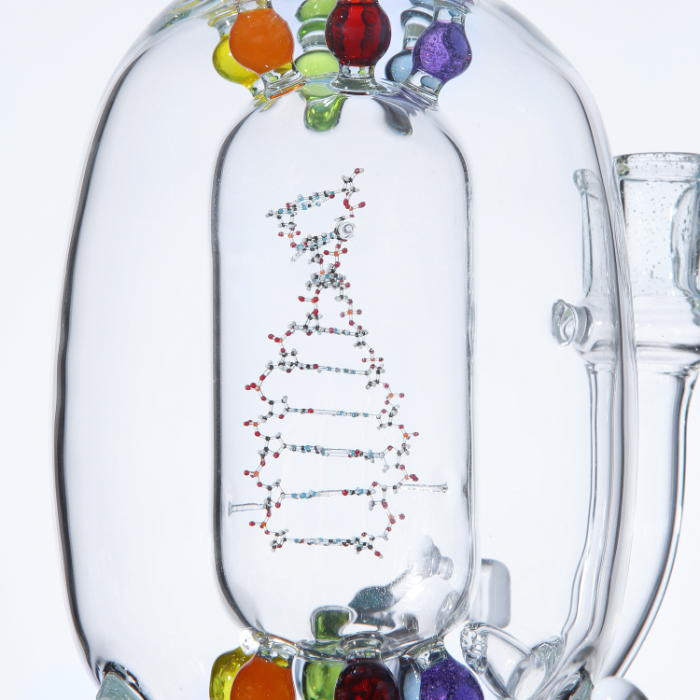
Do you have a career highlight?
My career highlight was probably being a featured artist for a glassblowing demonstration organised by Roor for the Cultiva Hemp Expo in Austria in 2019. Roor is a waterpipe company based in Germany and made some of the first glass pieces that sparked my curiosity in glassblowing back in 2011! The owner and founder, Martin Birzle is responsible for many innovations in the functional glass world. After seeing a molecule pendant I had made and shipped overseas, he approached me about collaborating.
During a short visit to the factory in Germany in early 2019, he invited me back with my original mentor Nathan Bennett and another Santa Cruz artist (and now shop mate), Cameron Burns. The three of us travelled to Germany, where we were hosted by Roor and collaborated on a series of pieces, then we went to Austria, where we spent three days blowing glass in a beautiful venue. We made several very intricate pieces and the whole experience was incredibly surreal. After the demonstration, we all travelled around Europe independently. On those travels, I visited Venice and made a goblet with the Ballarin brothers on Murano island and visited some breathtaking scenery in the Austrian Alps. That entire trip is certainly the highlight (so far!) of my glass career.
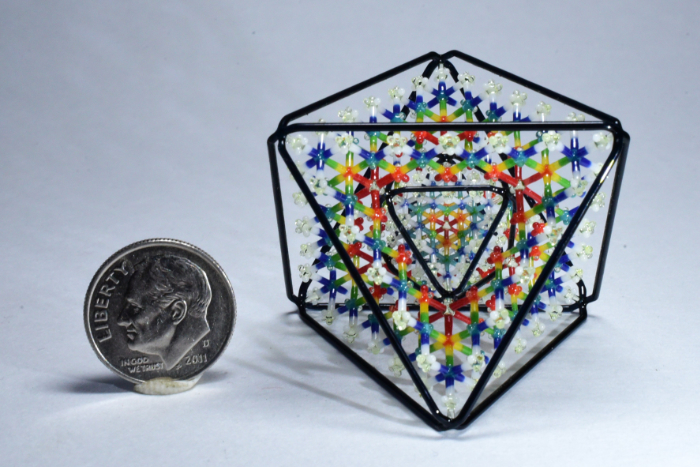
Where is your glass practice heading next?
The future of my glass practice is uncertain but exciting. On the torch, I aim to continue to refine my techniques and make even more intricate work as cleanly as possible. As I get more comfortable with some of the riskier assembly techniques I use in my functional work, like incorporating spinning components, I am able to add more details and pour more time into the patterns on these parts. I also hope to continue trying new techniques at every scale, as well as pushing more of my full-size skills into the micro size. On the flipside, I am planning to do a series of much larger, geometric pieces that could be displayed more prominently than the micro versions.
Off the torch, I hope to build a studio of my own soon, instead of working out of a shared space. I also am excited to teach more workshops and classes, and continue to travel the world, meeting other glass enthusiasts in every part of the globe.
What advice would you give to someone starting out on a career with glass?
I would recommend trying as many techniques and styles as possible! I see a lot of novice glassblowers, especially in the pipe-making scene, who get caught up with deciding what their signature style should be instead of just exploring the medium. It is true that defining and mastering a specific technique or niche can lead to a more dedicated collector base and sales, but I think it is crucial to allow that to develop naturally. Plus, even once it develops, it’s important to give yourself some creative wiggle room and not get too locked into making one specific thing, to avoid creative burnout.

And finally…
It has been absolutely fascinating to me, in developing my body of tiny, intricate work, to see how much this medium can scale down! Almost every fundamental principle and technique to flameworking applies to a 1mm sphere just as much as a 1-inch sphere. As long as everything – tools, flame, prep, timing, etc – is scaled down, too, I really don’t see a physical minimum for how small the glass can go!
Find out more about Dan Hoffman and his work via his website or Instagram: @danhoffmanglass.
Main feature image: Micro-scale flameworked borosilicate glass Oxytocin molecule. Photo: Jeff DiMarco.
